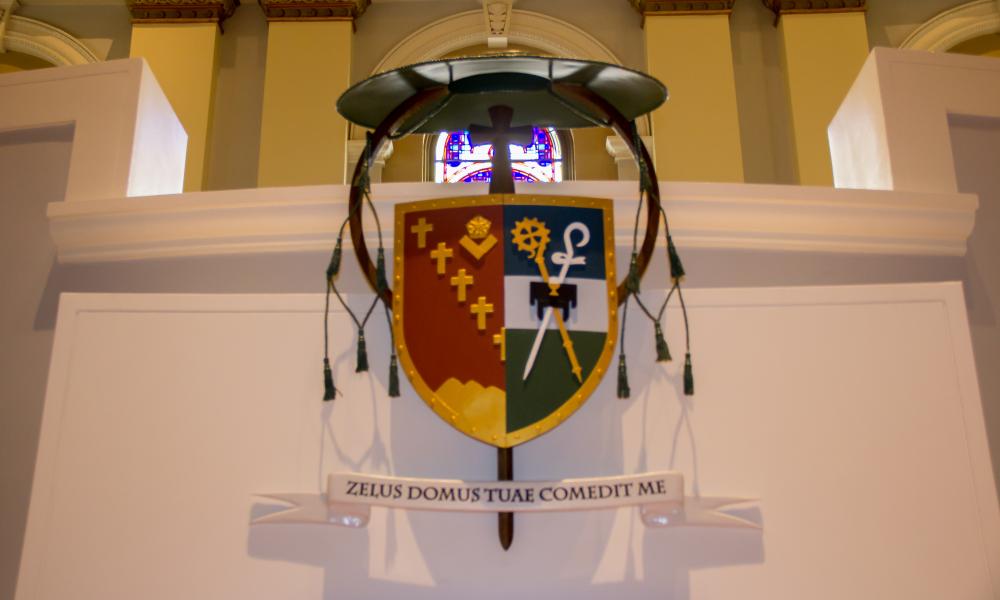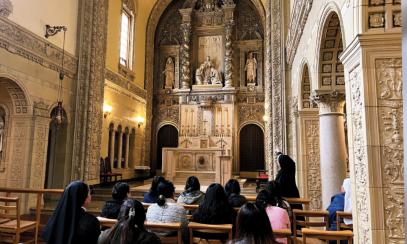
Coat of Arms of the Most Reverend Oscar Cantú, Bishop of San José
In accordance with the Church’s heraldic tradition, the coat of arms of the bishop of a diocese is joined with the coat of arms of the diocese. Recently, a new Coat of Arms was installed at the Cathedral Basilica of St. Joseph. The left side of the shield represents the Diocese of San José, and the right side represents the personal symbols of Bishop Cantú.
The arms of the Diocese of San José (left side) are composed of symbols showing California roots, the Santa Clara Valley, and the City of San Jose. The diagonal band of Latin crosses represents the missionary tradition of the area (21 California Missions), of which Mission Santa Clara de Asís (1777) is one. Symbols also represent the Archdiocese of San Francisco, from which the Diocese of San Jose was founded in 1981; the rose, emblem of Mary (Our Lady of Guadalupe); a carpenter's square representing the Diocese's patron, St. Joseph; and mountains at the bottom, representing the Santa Clara Valley.
The coat of arms of a bishop is composed of the following: a shield with its symbols, referring to family, geographic, religious, and historical meanings, or the name of the Bishop; a golden processional cross, representing the rank of Bishop, behind the shield; a green hat, called a galero, with twelve (six on each side) tassels attached, in rows of one, two and three, from the top; and a scroll with the motto, written in black, located beneath the shield
For his personal coat of arms (right side), Bishop Cantú has adopted a design that reflects aspects of his life and his ministry as a priest. On a white field across the center of the design is a black table on which is displayed a gold chalice and white host, for the Eucharist, the central feature of priestly ministry. The Lord’s table and the family table are where we gather – in the Church and the domestic Church. They represent the two places where Bishop Cantú was formed as a person and a Christian.
The design is placed on a split field that is blue on top (representing his American citizenship and residence) and green on the bottom (representing his Mexican heritage, as a son of immigrants). On this split field are two crosiers: a gold bishop’s staff and a simple abbot’s veiled staff. These are to honor Saint Ansgar (also known as Saint Oscar, and thus Bishop Cantú’s patron saint), who was a Benedictine abbot before he was appointed Bishop of Hamburg, Germany. Abbots used a veiled crosier because in ancient days, when bishops wore gloves during the liturgy, abbots did not; and the veil was used to keep the abbot’s hands clean for worship.
Bishop Cantú chose as his episcopal motto the Latin words, Zelus domus tuae comedit me. This phrase, from Psalm 69, expresses the burning desire that motivates the bishop to work for the Kingdom of God: “Zeal for Your house consumes me.”

